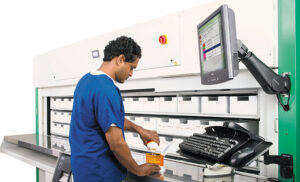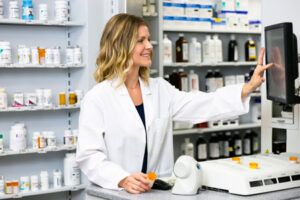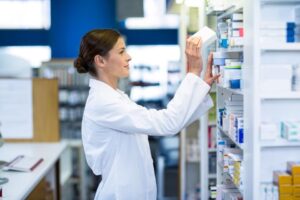When it comes to pharmacy automation, pharmaceutical manufacturing, and life science, the most important thing for manufacturers is production systems that can properly process, dispense, label, and package pharmaceuticals and prescriptions in large quantities.
Pharmacy automation providers must prove that their equipment and solutions perform with precision at all times to ensure medications are made to the exact dose and prescriptions are filled with the correct quantity.
Pharmacy Automation
Any operation that uses technology to manage and distribute medications is referred to as pharmacy automation. The most frequent form of automation is robotics and pill counters. It allows pharmacies to automate processes and reduce the danger of human mistakes. Its advantages usually include increased prescription volume and efficiency.
Pharmacy automation provides many benefits to pharmacies, it’s transforming the pharmacy business model for the better, from pill counters to robotics. Getting drugs to patients is one of the traditional jobs for pharmacists. Direct treatments that improve patient outcomes are possible when the proper drug is given to the right patient at the right time. The mechanics of medication dispensing on the other hand are mind-numbingly tedious, repetitive, and nearly impossible to perform without an error.
The solution for this problem is Automation. Dispensing robots aren’t ever bored, distracted, or make nearly as many mistakes as their humans. Dispensing robots also free up pharmacists and technicians for more profitable therapeutic services that require human judgment in this era of ever-shrinking prescription margins.
Benefits of Pharmacy Automation
Some pharmacists have held on to the old ways of doing business. However, as the advantages of automation become more obvious even traditionalists are beginning to make the switch. The benefits include:
Increased Speed
Even the most experienced pharmacists or technicians can’t keep up with a machine. Automation allows pharmacies to fill more orders quickly while allowing humans to focus on duties that cannot be automated, such as interacting with patients face to face.
Greater Accuracy
One of the main concerns in the pharmacy world is accuracy. Even the most experienced or cautious person can make mistakes. For many medications, a dosage error can have serious consequences or even result in death. The chances of error are considerably reduced when the procedure of measuring out medication is automated.
Greater Security and Confidentiality
When contacting patients about their prescriptions or following security protocols for drugs like Opiates, the human might make mistakes. Automation can eliminate this type of possible error.
Automation improves a pharmacy’s productivity while lowering its error rate considerably. It allows human pharmacists to focus on critical activities like face-to-face interactions with patients which can’t be delegated to a machine.



